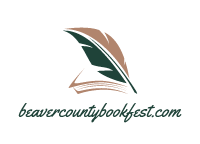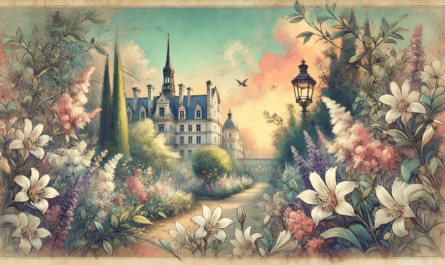Origins and development of the hero portrait genre in modern prose
Portrait of a hero As a literary genre, it has a rich history, rooted in ancient myths and epics. However, over time, this genre has transformed, adapting to changes in society and culture. In classical literature, heroes were often portrayed in an idealized light, representing examples of virtue or personification of certain moral qualities. They served as a kind of standards for readers, showing what an ideal person should be like in the context of a particular era. In early works, heroes were often perceived as representatives of higher powers or fate, whose actions and decisions were determined by the will of the gods or universal laws.
With the development of realism in literature, starting from the 19th century, the image of the hero began to acquire more realistic and multifaceted features. Writers began to be interested not only in the external actions of their characters, but also in their inner world, psychological motivations and personal dilemmas. In the 20th century, with the advent of modernism and postmodernism, the portrait of the hero became even more complex and ambiguous. Literature began to actively explore themes of internal conflict, existential crisis and the search for the meaning of life.
Typology of heroes of the 21st century in literature
In the literature of the 21st century, there is a significant diversity of typologies of heroes, reflecting the complexity and diversity of human experience. Modern writers pay attention not only to traditional archetypes, such as the savior hero or antihero, but also to more complex and ambivalent images. One of the key features of the heroes of our time is their inner richness and ambiguity. The characters often face moral dilemmas, choosing between self-interest and the public good, which highlights their humanity and makes them more relatable to the reader.
Modern heroes often reflect global social and cultural changes taking place in the world. In the era of globalization and digitalization, writers are exploring new forms of identity that arise at the intersection of different cultures and traditions. Heroes of the 21st century can come from a variety of ethnic and social backgrounds, with unique worldviews and life experiences.
Social and cultural contexts in portraits of modern heroes
In the modern era, social and cultural contexts play a crucial role in the formation of literary heroes. Unlike classical literature, where characters could act independently of their social environment, modern characters inevitably find themselves involved in complex networks of social and cultural interactions. 21st century literature actively explores how social norms, political structures, and cultural traditions influence the personality and behavior of characters. This study allows us not only to better understand the characters, but also to analyze the social processes taking place in the modern world.
One of the key aspects of modern literary portraiture is attention to issues of social inequality and discrimination. The writers address themes such as racism, class inequality and marginalization. Literary works often feature heroes who fight systemic injustices or, on the contrary, are forced to submit to them. This allows authors not only to create emotionally rich stories, but also to express their opinions on current social issues.
Aesthetic techniques and stylistic features in descriptions of heroes
Modern writers use a variety of aesthetic techniques and stylistic features to create convincing and memorable portraits of characters. One of the most common methods is the use of internal monologue. This technique allows the reader to immerse himself in the thoughts and feelings of the character, revealing his inner world and emotional experiences. Internal monologue helps create an effect of intimacy and trust between the reader and the hero, making the story more intimate and personal.
Another important element is the use of multi-layered storytelling and non-linear plot structure. Modern works often present events from different points of view, allowing the reader to see the situation through the eyes of different characters. This creates a more complete and complex image of events and characters, emphasizing their versatility and internal contradictions. In addition, modern writers are actively experimenting with genres, mixing elements of drama, comedy, fantasy and other genres. They also use irony, parody and other stylistic devices to emphasize the characteristics of their characters and express the author’s position.
The role of individualism and collective identities in the formation of heroes
In modern literature, the question of the role of individualism and collective identities in the formation of the personalities of heroes is often raised. In an era of globalization and changing social norms, the authors explore how the balance between personal ambitions and responsibilities to society affects the actions and personalities of characters. Heroes often find themselves at a crossroads between the desire to follow their personal aspirations and the need to live up to the expectations of their family, society, or cultural group. This conflict becomes a source of deep internal contradictions, which gives the characters realism and emotional depth.
Individualism is manifested in literature through an emphasis on the uniqueness and originality of each character. Modern fiction writers emphasize the importance of personal choice and autonomy, allowing their characters to find their own paths and form unique identities. However, at the same time, collective identities, such as national, ethnic, religious or gender, continue to have a significant impact on the lives of the characters.
The influence of the digital age on the image of the hero in modern prose
Digital Age significantly changed the way modern writers create characters. The development of the Internet, social networks and digital technologies has had a profound impact on literary works, introducing new themes and motifs into the portraits of heroes.
- The Internet as a space of self-identification. Modern heroes often use the Internet and social networks to find and express their identity, which reflects their desire for self-discovery and self-expression.
- The impact of digital communication. Dialogue through instant messengers and social networks becomes part of the characters’ lives, changing their interaction with the world and other characters.
- Technological dependence. Prose writers explore how addiction to technology and social networks affect the mental health and social skills of the characters.
- Virtual and alternative realities. Some works depict characters seeking solace or alternative lives in virtual worlds, raising questions about reality and illusion.
- Privacy issues and digital footprint. The influence of the digital age also manifests itself in issues of privacy, where the characters face problems of control over personal information and digital footprints.
Questions and answers
Answer 1: The genre of the hero portrait changed under the influence of realism, modernism and postmodernism, which led to a focus on the inner world and emotional experiences of the characters.
Answer 2: The typology of heroes has become more diverse and multifaceted, reflecting globalization, cultural intersections and issues of gender, highlighting the complexity of identity in modern society.
Answer 3: Social and cultural contexts shape the characters’ personalities and behavior, highlighting themes such as social inequality, discrimination and marginalization.
Answer 4: Contemporary prose uses internal monologue, layered storytelling, nonlinear structure, and genre experimentation to create complex characters.
Answer 5: The conflict manifests itself in the clash of personal ambitions with social responsibilities, emphasizing the uniqueness of the heroes and the influence of collective identities on their lives and choices.




